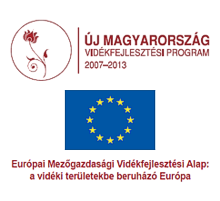Exactly How to Check Out Tarot Cards: A Comprehensive Guide
For centuries, tarot cards have been used as a tool for prophecy and self-discovery. Whether you’re an experienced fortuneteller or a novice looking to explore this old practice, recognizing just how to review tarot cards can be a transformative experience. In this overview, we’ll walk you through the fundamentals of tarot card analysis, provide pointers for translating the cards, and deal assistance fortune teller cards on how to establish your intuition.
The Essentials of Tarot Card Analysis
Before diving right into the globe of tarot card analysis, it’s important to familiarize yourself with the fundamental parts of a deck. A conventional tarot deck contains 78 cards, split into two major categories: the Major Arcana and the Minor Arcana. The Significant Arcana consists of 22 cards that represent major life events and spiritual lessons, while the Minor Arcana consists of 56 cards that correspond to daily experiences and difficulties.
When carrying out a tarot analysis, it is essential to create a spiritual space and set your purpose for the reading. Shuffle the cards while concentrating on your concern or purpose, and afterwards choose a spread that reverberates with you. Usual tarot spreads include the Celtic Cross, the mystic sense reviews Three-Card Spread, and the Past-Present-Future Spread.
As you set out the cards in your picked spread, keep in mind of the imagery, icons, and shades on each card. Pay attention to your instinct and inner support as you translate the cards, and count on that the messages you get are implied for your highest possible good.
- Major Arcana: Stands for major life events and spiritual lessons
- Minor Arcana: Corresponds to day-to-day experiences and difficulties
- Develop a spiritual space and establish your objective for the analysis
- Select a tarot card spread that reverberates with you
Tips for Interpreting Tarot Card Cards
Interpreting tarot cards is a deeply personal and instinctive process. While there are conventional significances associated with each card, it is very important to trust your own intuition and interpretation when checking out the cards. Below are some suggestions to help you interpret tarot card cards effectively:
1. Depend on your instinct: Your intuition is your best device when checking out tarot cards. Allow on your own to connect with the cards on a deep degree and trust the messages that come with.
2. Consider the images: Take note of the imagery on each card, as it can provide valuable understandings right into the card’s significance. Notice the symbols, shades, and feelings portrayed on the card.
3. Keep a tarot journal: Maintaining a tarot journal can help you track your progression and strengthen your understanding of the cards. List your interpretations, experiences, and understandings after each analysis.
Establishing Your Intuition
Among the key facets of reviewing tarot card cards is establishing your instinct. Your intuition is your internal assistance system that helps you use your subconscious mind and connect with the cumulative unconscious. Here are some suggestions for creating your instinct:
- Meditate consistently to silent your mind and connect with your inner knowledge
- Technique mindfulness to remain present and concentrated during tarot card analyses
- Depend on your intestine impulses and initial impacts when reviewing the cards
- Participate in innovative activities like journaling, painting, or dancing to promote your instinct
Verdict
Reviewing tarot card cards is an effective practice that can offer understanding, support, and clarity in different locations of your life. Whether you’re wanting to discover your spirituality, gain self-awareness, or seek answers to details questions, tarot card reading can be a useful device for individual development and change. By following the ideas and assistance in this guide, you can improve your tarot reading abilities and grow your link with the cards.



Leave a Reply